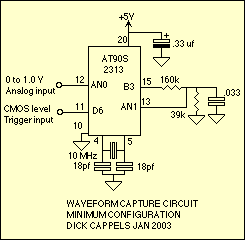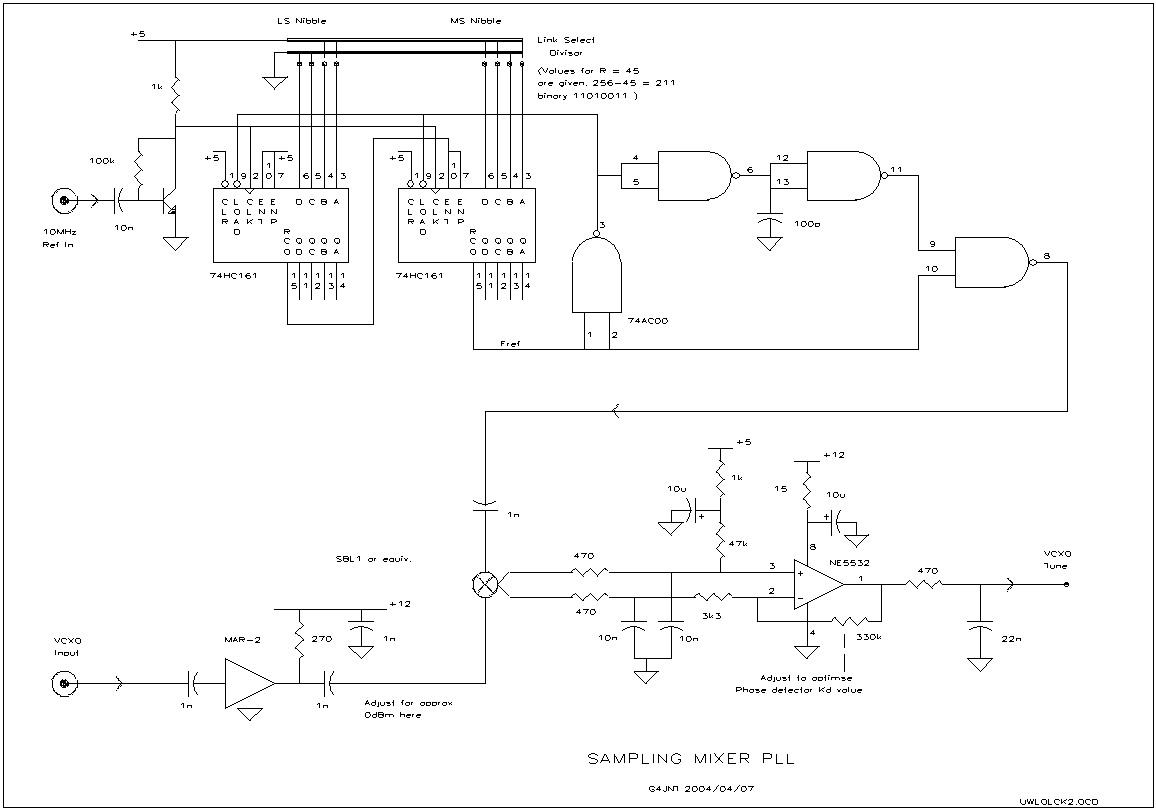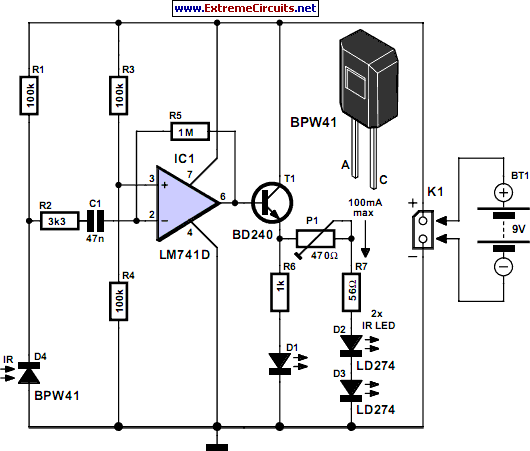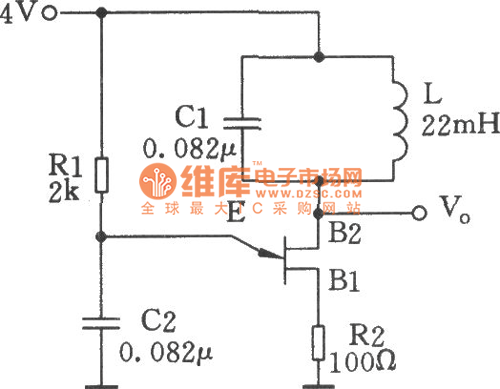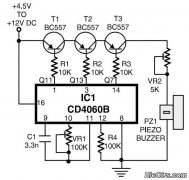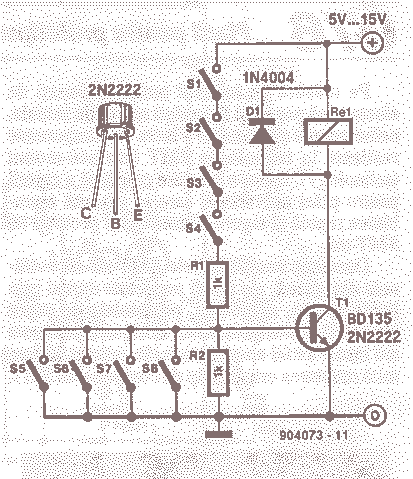
Simple Ultrasonic Wave Generator
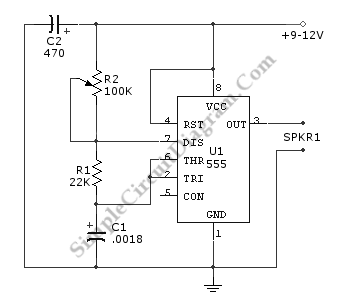
An ultrasonic sound wave can be generated using an electronic circuit. This simple electronic circuit can produce an ultrasonic wave with a frequency range of 12 kHz to...
An ultrasonic sound wave generator circuit typically employs a few key components to create high-frequency sound waves that are above the audible range for humans. This circuit can include a signal generator, a power amplifier, and a transducer, such as a piezoelectric speaker, to convert electrical signals into sound waves.
The signal generator is responsible for producing a square wave or sine wave signal at the desired frequency, which in this case is within the ultrasonic range, typically starting from 12 kHz. This signal is then amplified by the power amplifier to ensure that sufficient power is supplied to the transducer. The transducer, when energized by the amplified signal, vibrates at the specified frequency, generating ultrasonic sound waves.
For the design of this circuit, a 555 timer IC can be utilized as a simple and effective oscillator to generate the required frequency. By configuring the 555 timer in astable mode, it can continuously produce a square wave output. The frequency of oscillation can be adjusted by changing the resistor and capacitor values in the timing circuit.
The output from the 555 timer is then fed into a transistor-based amplifier circuit to increase the output power. This step is crucial as the transducer requires a certain level of power to function effectively. A common choice for the transistor is an NPN type, which can handle the required current to drive the transducer.
Finally, the piezoelectric transducer is connected to the output of the amplifier. The selection of the transducer should correspond to the desired frequency range and power requirements. The entire circuit can be powered using a DC power supply, ensuring that the components operate efficiently within their specified voltage ratings.
In summary, the ultrasonic sound wave generator circuit is a straightforward yet effective design that utilizes a signal generator, an amplifier, and a transducer to produce ultrasonic sound waves. The careful selection of components and their configuration is essential for achieving the desired frequency and output power.Ultrasonic sound wave can be generated using electronic circuit. This simple electronic circuit can generate an ultrasonic wave with frequency range of 12 to.. 🔗 External reference
An ultrasonic sound wave generator circuit typically employs a few key components to create high-frequency sound waves that are above the audible range for humans. This circuit can include a signal generator, a power amplifier, and a transducer, such as a piezoelectric speaker, to convert electrical signals into sound waves.
The signal generator is responsible for producing a square wave or sine wave signal at the desired frequency, which in this case is within the ultrasonic range, typically starting from 12 kHz. This signal is then amplified by the power amplifier to ensure that sufficient power is supplied to the transducer. The transducer, when energized by the amplified signal, vibrates at the specified frequency, generating ultrasonic sound waves.
For the design of this circuit, a 555 timer IC can be utilized as a simple and effective oscillator to generate the required frequency. By configuring the 555 timer in astable mode, it can continuously produce a square wave output. The frequency of oscillation can be adjusted by changing the resistor and capacitor values in the timing circuit.
The output from the 555 timer is then fed into a transistor-based amplifier circuit to increase the output power. This step is crucial as the transducer requires a certain level of power to function effectively. A common choice for the transistor is an NPN type, which can handle the required current to drive the transducer.
Finally, the piezoelectric transducer is connected to the output of the amplifier. The selection of the transducer should correspond to the desired frequency range and power requirements. The entire circuit can be powered using a DC power supply, ensuring that the components operate efficiently within their specified voltage ratings.
In summary, the ultrasonic sound wave generator circuit is a straightforward yet effective design that utilizes a signal generator, an amplifier, and a transducer to produce ultrasonic sound waves. The careful selection of components and their configuration is essential for achieving the desired frequency and output power.Ultrasonic sound wave can be generated using electronic circuit. This simple electronic circuit can generate an ultrasonic wave with frequency range of 12 to.. 🔗 External reference
